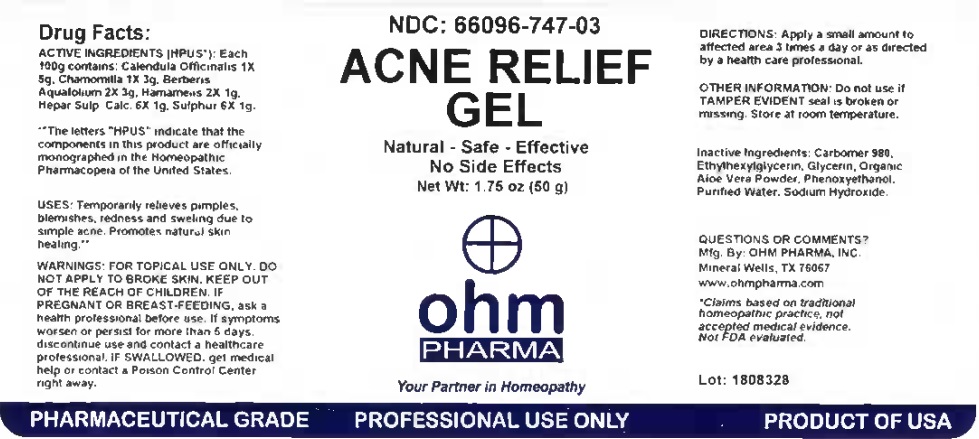
Acne Relief Gel while Breastfeeding
What is Acne Relief Gel used for?
Purpose: Temporay relieves pimples, blemishes, redness and swelling due to simple acne. Promotes natural skin healing. **
Is Acne Relief Gel usage safe while breastfeeding? If a lactating mother is using it can there be any effect on growth or development of infant?

Acne Relief Gel Breastfeeding Analsys
Calendula officinalis flowering top while Breastfeeding
SafeCAS Number: 977001-93-6
The inflorescences of this plant originating in Europe are used.It contains polysaccharides, flavonoids, saponins… Attributed properties which do not have sufficient clinical evidence to support them: healing agent, antiseptic, anti-inflammatory (local, dermatological). There is no evidence of its efficacy when taken orally to treat gastrointestinal disorders. Indications from the Commission E of the German Ministry of Health and the EMA: topical treatment of minor skin inflammations, ulcers and burns. Since the last update we have not found any published data on its excretion in breast milk. A plant devoid of toxicity. Oral use during breastfeeding is not advised (EMA 2008, Amir 2011).The small dose and poor plasma uptake of most topical dermatological preparations make it very unlikely that significant amounts will pass into breast milk. There is no evidence of its effectiveness in treating nipple cracking or inflammation. If applied to the breast, do so after breastfeeding and clean before the next feed.
Hamamelis virginiana root bark/stem bark while Breastfeeding
SafeCAS Number: 68916-39-2
Leaves of the plant and sometimes bark also are used. It contains tannins, pro anthocyanidins and flavonic heterosides (quercitrin, isoquercitrin). Venous-tonic and anti-inflammatory properties have not been well established. The Commission E of the German Ministry of Health authorizes its use locally and by suppositories.
Calcium sulfide while Breastfeeding
SafeVarious calcium salts (Acetate, Carbonate, Chloride, Citrate, Phosphate, Gluceptate, Glucobionato, Lactate, Laxctobionato Pidolate, Silicate) are used in the management of hypocalcemia, supplements for treating calcium deficiency states and antacids ( Carbonate and Silicate) Daily requirement of calcium during lactation are 1 g (1.3 g in children under 20 years).Calcium supplements in the diet does not affect the concentration of calcium in milk.Excessive intake of calcium is not good for health. During lactation, consumption of calcium should not exceed 2.5 g a day. WHO List of Essential Medicines 2002 states that it is compatible with breastfeeding.
Acne Relief Gel Breastfeeding Analsys - 2
Calendula officinalis flowering top while Breastfeeding
CAS Number: 84776-23-8; 70892-20
Calendula (Calendula officinalis) flowers contain triterpene glycosides and aglycones, carotenoids, and essential oils. Topical application of calendula products has been used to treat sore and cracked nipples during nursing, either in homeopathic or pharmacologic preparations,[1][2][3] although little high-quality evidence supports this use.[4] One uncontrolled case series found that a cream containing Mimosa tenuiflora and Calendula officinalis was useful for healing cracked nipples during breastfeeding;[5] however, the lack of a control group and the presence of another ingredient makes the evaluation of calendula's efficacy impossible. Oral calendula has no specific lactation-related uses and no information is available on the oral use of calendula during breastfeeding. Calendula is "generally recognized as safe" (GRAS) as a food by the U.S. Food and Drug Administration when used as a seasoning or flavoring. Allergic reactions, including cross-reactions to chrysanthemums, daisies and marigolds, occur rarely. Dietary supplements do not require extensive pre-marketing approval from the U.S. Food and Drug Administration. Manufacturers are responsible to ensure the safety, but do not need to the safety and effectiveness of dietary supplements before they are marketed. Dietary supplements may contain multiple ingredients, and differences are often found between labeled and actual ingredients or their amounts. A manufacturer may contract with an independent organization to verify the quality of a product or its ingredients, but that does certify the safety or effectiveness of a product. Because of the above issues, clinical testing results on one product may not be applicable to other products. More detailed information #about dietary supplements# is available elsewhere on the LactMed Web site.
Sulfur while Breastfeeding
CAS Number: 7704-34-9
Sulfur 5% to 10% in a petrolatum base is safe for topical use in children, including infants under 2 months of age.[1] This makes it a useful alternative to organic insecticides for treating scabies in nursing mothers; however, the petrolatum base makes undesirable for use on the breast.
Acne Relief Gel Breastfeeding Analsys - 3
Sulfur and Breastfeeding
SafeNote: Study and data for tropical use only
Warning: Tropical usage in breast area shall be avoided to prevent the Thuja passing orally in Infants.
I am nursing mother and I have already used Acne Relief Gel, what should I do?
Due to high dilution of ingredients in homeopathic medicines they do not create much problem for baby. Acne Relief Gel is a homeopathic medicine and if your baby does not have any abnormal symptoms then there is nothing to worry about. Be careful with too much usage of ethanol based homeopathic medicines during breastfeeding.
I am nursing mother and my doctor has suggested me to use Acne Relief Gel, is it safe?
Homeopathic medicines are usually safe in breastfeeding and if Acne Relief Gel has been recommended by doctor then there should be no concern about its usage in breastfeeding.
If I am using Acne Relief Gel, will my baby need extra monitoring?
Not exactly.
Who can I talk to if I have questions about usage of Acne Relief Gel in breastfeeding?
US
National Womens Health and Breastfeeding Helpline: 800-994-9662 (TDD 888-220-5446) 9 a.m. and 6 p.m. ET, Monday through Friday
UK
National Breastfeeding Helpline: 0300-100-0212 9.30am to 9.30pm, daily
Association of Breastfeeding Mothers: 0300-330-5453
La Leche League: 0345-120-2918
The Breastfeeding Network supporter line in Bengali and Sylheti: 0300-456-2421
National Childbirth Trust (NCT): 0300-330-0700
Australia
National Breastfeeding Helpline: 1800-686-268 24 hours a day, 7 days a week
Canada
Telehealth Ontario for breastfeeding: 1-866-797-0000 24 hours a day, 7 days a week
